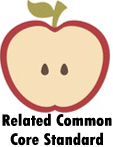Cloze Reading Worksheets
Related ELA Standard: RL.4.4

The cloze reading technique we explore here can lead to much better reading comprehension skills. You will be presented with your everyday reading passages, only catch is several to a significant number of words have been removed from that passage. Students will then use their background knowledge and context, in some cases, to determine the missing words. In some cases, you will be given a word bank and in others you will not. The word bank can help students build confidence, but it can also be used to introduce new vocabulary words or concepts that they are not familiar. Teachers are also encouraged to use this as a listening exercise as well. This strategy demands that students pay more attention to what they are reading and focus on the development and delivery of the work. This leads to more confident readers that also become strong writers. Take a look at all of the cloze exercises that we have created for you below.
Cloze Reading Worksheets:
Clicker Training - Complete the epic story of training your favorite puppy. Read the passage and see which of terms are missing in context.
Hungry Plants -
We look at the remarkable process of plants making food for themselves.
Breaking It Down -
Explore the organisms that return nutrients back to the soil.
The Nurse -
Mrs. Darling loved to have everything just so.
Earth Day -
This April event helps us remember how delicate Mother Nature is.
My Father Met a Cat -
This is a great activity for building up your reading and writing skills.
How Cloze Reading Passages Can Improve Reading and Writing Skills?
The first attribute that is often overlooked is that cloze passages are naturally engaging to students. They are presented is as simple reading word puzzles. That extra enthusiasm can go a long way. Students will often go after it, full force and put their best effort forward. If they are not careful, they may just learn something along the way. This technique is great to help students learn how to find and analyze context clues. Once they are comfortable with this, they can easily apply this towards their own writing and help them improve their use of language to achieve their goals.
Teachers can use this technique as a tool for students to learn all types of different writing practices. We have already explored the concept of using this to learn new vocabulary, but you can also use it for much more. Students often have difficulty with transition words, these are the words and phrases that link two thoughts together. A great way to learn the proper use of them is through, you guessed it, making a transition word cloze. As you begin to tackle a new piece of literature with students, you can use this technique as well. Just take a meaty section of dialogue and remove a few words on your own.
I find that the cloze technique has many different applications that can help students prepare themselves for a wide variety of tasks. One often overlooked technique is to use cloze as a tool to learn new concepts or vocabulary. A good way to apply this method is to create a study guide for yourself but leave out those key new concepts that we are trying to learn and force yourself to know where they belong within the study guide. This is one method you can use to prepare for an assessment.
What the Research Indicates
The effectiveness of this technique on helping improve student reading comprehension has been widely studied. The main caveat of the research is that most of the research on the cloze procedure took place nearly 50 years ago. We would assume that this is because there where an overwhelming number of studies that all reached the same conclusion.
We tracked several studies that had students perform cloze reading procedure exercises regularly (2-3 session per week). The results of over a dozen studies showed significant improvement in student’s ability to use context clues effectively. This improvement was seen by three-quarters of the students that took part in the studies. Students also demonstrated a greatly improve tracking ability. Though anecdotal, many of the studies theorized that this technique helped students learn how to process and order what they have read.
